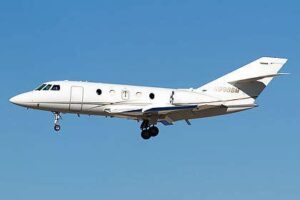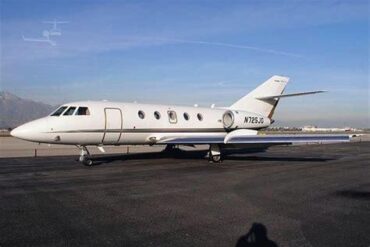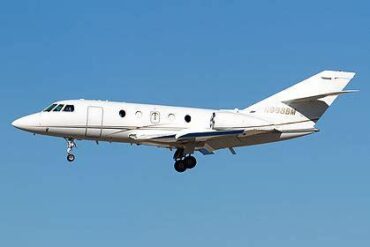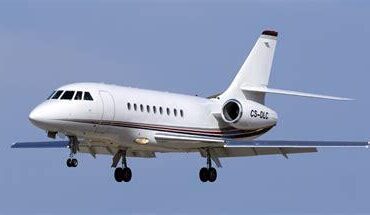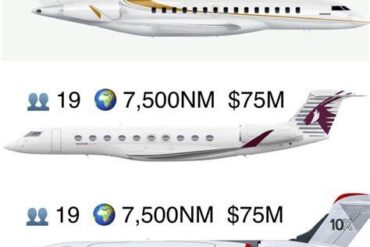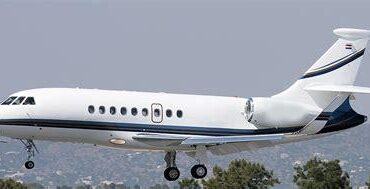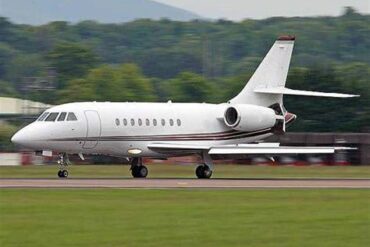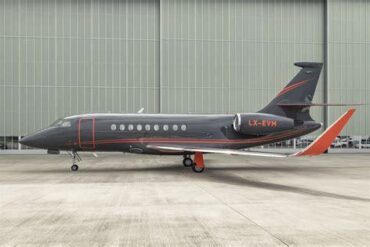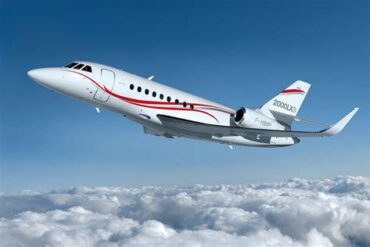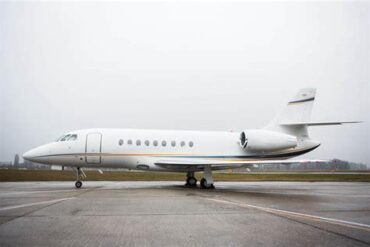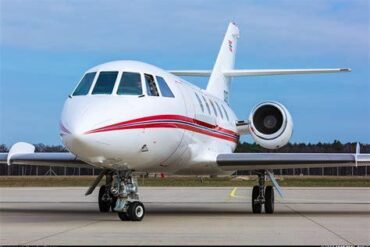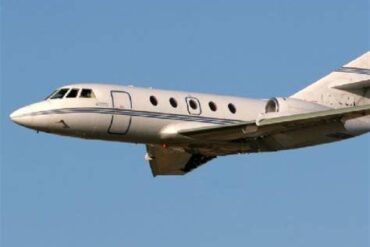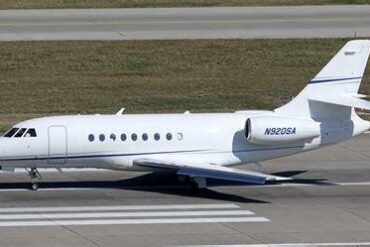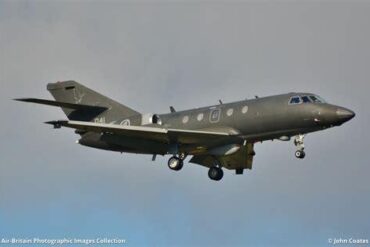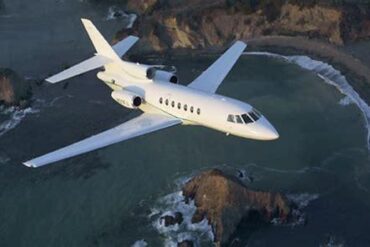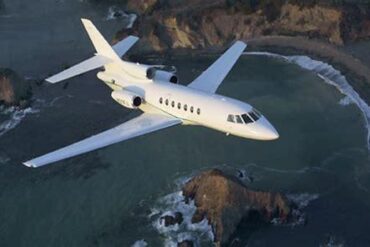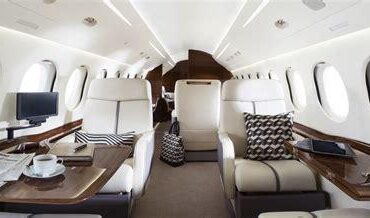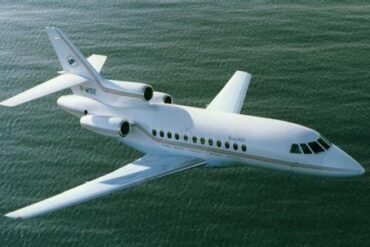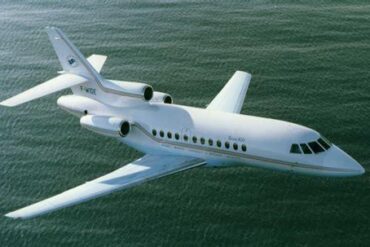The Dassault Falcon 20F-5 is a distinguished aircraft within the business jet sector, known for its exceptional performance, versatility, and comfort. As a potential buyer or operator of this aircraft, understanding its price and operating costs is crucial for making informed decisions. This article delves deep into the financial aspects of owning and operating a Falcon 20F-5, offering insights that will aid in your evaluation.
Overview of the Dassault Falcon 20F-5
The Falcon 20F-5, introduced by Dassault Aviation, is a twin-engine business jet that has garnered acclaim for its spacious cabin and impressive range. With a maximum seating capacity of 8 to 10 passengers, the Falcon 20F-5 combines luxury with functionality. Its advanced avionics and aerodynamic design allow it to cruise at speeds of up to 500 knots, making it an attractive option for corporate travel.
Specifications of the Falcon 20F-5
-
Length: 19.6 meters (64 feet 4 inches)
-
Wingspan: 18.9 meters (62 feet 0 inches)
-
Height: 5.5 meters (18 feet 1 inch)
-
Maximum Takeoff Weight: 19,000 pounds (8,618 kg)
-
Range: Approximately 2,700 nautical miles
The aircraft’s range allows for non-stop flights between major cities, enhancing its appeal for business travelers who prioritize time efficiency.
Initial Purchase Price
When considering the initial purchase price of a Dassault Falcon 20F-5, potential buyers should anticipate a figure ranging between $1.5 million and $3 million. Several factors influence this price point, including the aircraft’s age, condition, and any modifications or upgrades that have been made.
Market Variability
The used aircraft market can fluctuate significantly based on supply and demand dynamics. As such, prospective buyers are encouraged to conduct thorough research and consult with aviation brokers to secure the best possible deal. Factors such as aircraft history, maintenance records, and overall market trends should be carefully evaluated.
Operating Costs Breakdown
Owning an aircraft involves various operating costs that must be meticulously planned for. The Falcon 20F-5 is no exception, and understanding these costs is essential for budgeting and financial planning.
Fuel Costs
Fuel is one of the most significant expenses associated with operating a Falcon 20F-5. The aircraft consumes approximately 200 gallons per hour. Given current fuel prices averaging around $5.00 per gallon, operators can expect to spend about $1,000 per flight hour on fuel alone. This figure can vary depending on the specific route, weather conditions, and flying style.
Maintenance Costs
Regular maintenance is crucial for ensuring the safety and longevity of the Falcon 20F-5. Annual maintenance costs typically range from $50,000 to $100,000, depending on the frequency of inspections and the need for repairs or parts replacement. Additionally, operators should account for major inspections, which can cost upwards of $300,000 every few years, depending on the aircraft’s usage and operational history.
Crew Salaries
If the Falcon 20F-5 is operated with a full-time crew, salary expenses must be factored into the budget. A typical pilot salary can range from $75,000 to $150,000 annually, while co-pilots and flight attendants may add an additional $50,000 to $100,000 to the total payroll. For part-time or contract crew members, these costs may be lower but still significant.
Insurance Costs
Insurance is another critical component of operating an aircraft. The cost of insuring a Falcon 20F-5 typically falls between $25,000 and $50,000 annually, depending on coverage limits, the operator’s safety record, and the aircraft’s value. Engaging with a specialized aviation insurance broker can help optimize coverage while managing costs effectively.
Hangar and Parking Fees
Storing the Falcon 20F-5 also incurs costs, particularly if hangar space is required. Monthly hangar fees can range from $1,000 to $3,000, depending on location and facility amenities. Additionally, transient parking fees at airports can add to operating expenses, especially for frequent travelers.
Miscellaneous Costs
Operators should also consider miscellaneous costs, such as:
-
Landing fees: Typically ranging from $100 to $2,000 depending on the airport.
-
Navigation and communication charges: These can add several hundred dollars per flight.
-
Catering and onboard services: Costs can vary widely based on passenger preferences but can easily exceed $1,000 per flight.
Total Estimated Operating Costs
Considering all the aforementioned factors, the total operating costs for a Dassault Falcon 20F-5 generally amount to approximately $1,500 to $2,500 per flight hour. This estimate includes fuel, maintenance, crew salaries, insurance, hangar fees, and other miscellaneous expenses. Operators are advised to maintain a detailed financial plan to ensure all costs are adequately covered.
Cost Efficiency Strategies
To maximize the value of operating a Falcon 20F-5, operators can implement various cost-efficiency strategies:
Flight Planning Optimization
Utilizing advanced flight planning software can help identify the most efficient routes, potentially reducing fuel consumption and operational costs.
Regular Maintenance Checks
Adhering to a rigorous maintenance schedule can prevent costly repairs and extend the aircraft’s lifespan, ultimately leading to lower operating costs over time.
Crew Training
Investing in regular crew training ensures that pilots and crew members are proficient in operational procedures, which can enhance safety and efficiency during flights.
Bulk Fuel Purchasing
Establishing relationships with fuel suppliers can lead to bulk purchasing discounts, significantly reducing one of the most substantial ongoing expenses.
Conclusion
In conclusion, the Dassault Falcon 20F-5 is a premier choice for those seeking a reliable and luxurious business jet. While the initial purchase price ranges from $1.5 million to $3 million, the comprehensive understanding of operating costs—ranging from fuel to maintenance and crew salaries—is vital for prospective owners. By being informed and implementing strategic cost management practices, operators can enjoy the benefits of this remarkable aircraft while maintaining fiscal responsibility. The Falcon 20F-5 not only represents an investment in quality and performance but also offers opportunities for optimizing operational efficiency in the competitive world of business aviation.
